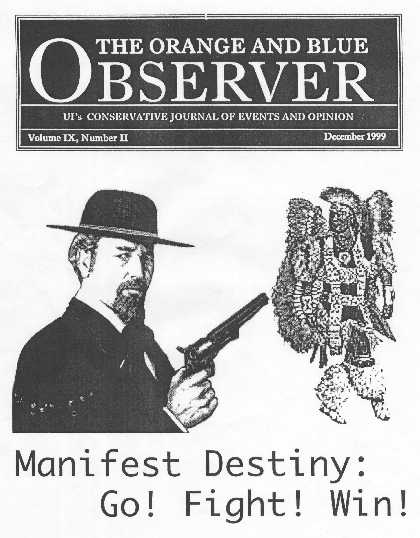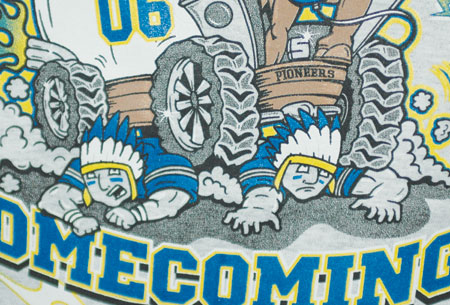I am a history teacher and I am offended every day by the events I teach. But teach I do, and despite their surprise and sometimes horror over their history, my students learn about changing attitudes and if they let me, I help them to view both sides of all conflicts.
As a teacher I know that people have different styles of learning. I take advantage of all styles and I firmly believe that simulation-gaming (recreating conflict via cardboard and paper) can turn players into learners. King Philip's War is a case in point. I did not intend to sensationalize anyone's suffering--the exact opposite. I designed the game to present to the world OUTSIDE of New England a tremendous conflict between American natives and the Puritan colonists who encroached on their tribal lands.
In my game's introductory history I present a balanced overview based not on a single magazine article as the article seems to intimate but on intense research and study ... which is still going on.
In the game itself I present some of the key historical characters and situations, not to glory in the defeat of Philip, but rather to offer the players the opportunity to learn about this little known but highly influencial historical event.
The purpose of King Philip's War? I love gaming and I love learning. I combined the two so that I could inform and educate, AND perhaps entice players into digging further into details of the conflict.
I would submit that the term "game" in and of itself assumes that the topic is trivialized. On the contrary. There is a world of simulation gaming that allows players insight into the past that they might never otherwise obtain.
Julie
But there's a fundamental problem here that we haven't discussed. Most war games based on history fit into one of these categories:
1) There's a good guy and a bad guy. Example: The US vs. Germany or Japan in WW II. Even if you take the Axis side, you know you're on the side that lost and deserved to lose.
2) The motivations and stakes of the two sides are clear and commonly known. Example: North vs. South in the American Civil War. Again, even if you take the South's side, you know you're on the side that lost and deserved to lose.
The situation is different when you have a game featuring colonists vs. Indians. In this case, the Euro-American invaders were in the wrong. They used immoral and illegal tactics to take what wasn't theirs.
Whatever the Indians did, they were defending their land and their way of life. They rightly concluded they were facing a cataclysmic assault of genocidal proportions. If they had known what would happen by 1890 (Wounded Knee), they would've slaughtered the Europeans without hesitation.
What game-players think
Yet most Americans, and most game-players, don't realize this. They think just the opposite: that the white invaders deserved to win because they were bringing civilization to the "wilderness." That the "savages" deserved to lose because they were primitive and superstitious and weren't doing anything productive with the land.
A game such as King Philip's War reinforces these messages. It tells players that war, violence, and massacres were "inevitable." That impersonal forces such as politics and economics led to the conquest of America; that no one was at fault. This ignores or obscures the fundamental wrongness of the situation: that Europeans sought to kill and enslave others in the name of God.
These arguments also would apply to a game of Nazis vs. Jews, which is why you don't see games like that. Anything that excuses or "sanitizes" the wrongness of a historical situation probably deserves to be criticized. Americans already get enough messages about how God has blessed their country and how exceptional they are. They don't need games to reinforce this message.
For more on the subject, see Protesting King Philip's War Game and Reactions to King Philip's War Game.
Below: Examples of what the typical American thinks.



2 comments:
Unfortunately, Julianne Jennings appears to be entirely ignorant of the history and nature of historical simulations. She clearly has no idea what she is talking about, and her premature protest smacks of the protests by right-wing Christian groups who protested The Last Temptation of Christ before it ever came out. As a historian and someone who works for a civil rights organization, but also someone who has used, designed, and written about historical simulations for decades, I can say that her protests are without merit.
'Yet most Americans, and most game-players, don't realize this. They think just the opposite: that the white invaders deserved to win because they were bringing civilization to the "wilderness."'
I beg to differ. And that's a fairly broad statement to make about a specific group of people. There's a word for that, I believe.
On the contrary, most gamers get to see both sides of a situation, and more often than not will delve deeper on their own to learn about the roots of those conflicts, the people involved, and the effects on later history.
In the meantime, here are some more games to feed the hysteria:
Wilderness War, Geronimo, The Battle of Little Big Horn, A Dark and Bloody Ground, Iroquoia-The Beaver Wars (no, I don't know what that means), Custer's Last Stand, Volley and Bayonet, Custer's Last Stand: The Yellowstone/Little Bighorn Campaign-1876, Pony Soldiers: Skirmish Rules for the Indian Wars & the Old West, Wampanoag, Battlegame Book 1: The Wild West, They Died With Their Boots On Vol.1 & 2, Principles of War-19th Century, Count Coup - An Anthropological Board Game of North American Indian Ways, Mayhem: Muskets and Mohawks, New France 1760, Harvest the Wind, Chiklat-The Indian Warrior Game, Cowboys and Indians, Mad Anthony: War for Ohio 1791-94, Frontier: Blood on the Plains, Rocket's Red Glare, Warpath (1966), Wild Bill Hickock's the Cavalry and the Indians Game (1955), 1812, Fort Apache, Among the War Parties: Adventures in the Early Americas, The Sword in the Forest, F Troop (1965), This Very Ground, Yellow Ribbon, Napenaltowaksche (seems this title is Lenni Lenape (Delaware Indian) for "They will be scalping each other"), Drums of War Along the Mohawk, War in the Forest, Indian Wars, The Great Black Swamp, War Paint, Davy Crockett (1956), The Mystic Warriors of the Plains, Scalplock: A Game of Indian Fighting, and Lords of the Sierra Madre.
Post a Comment